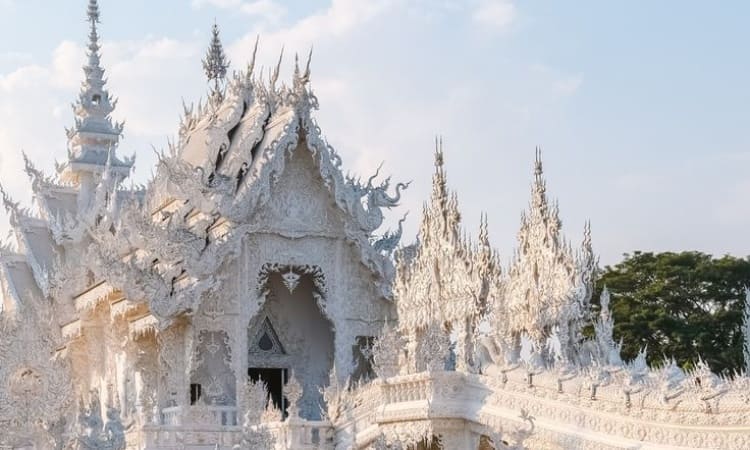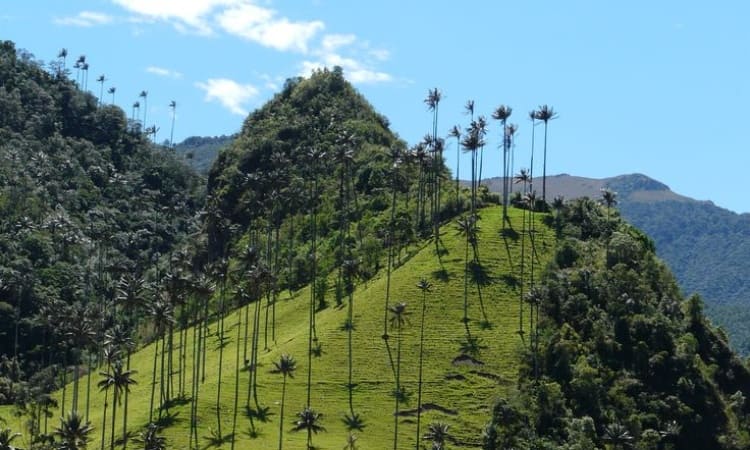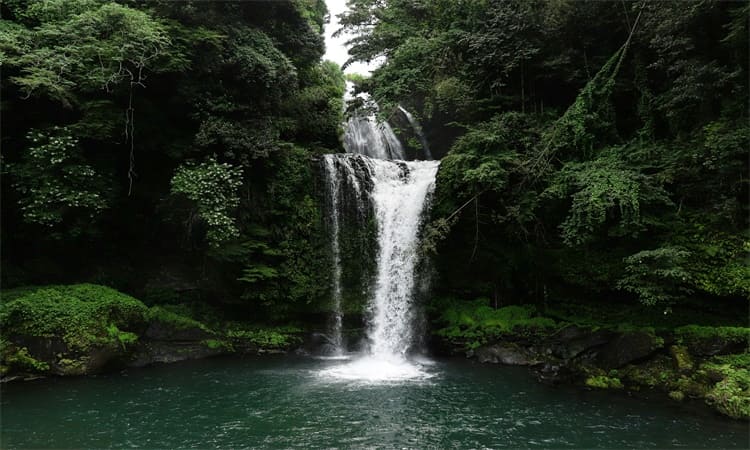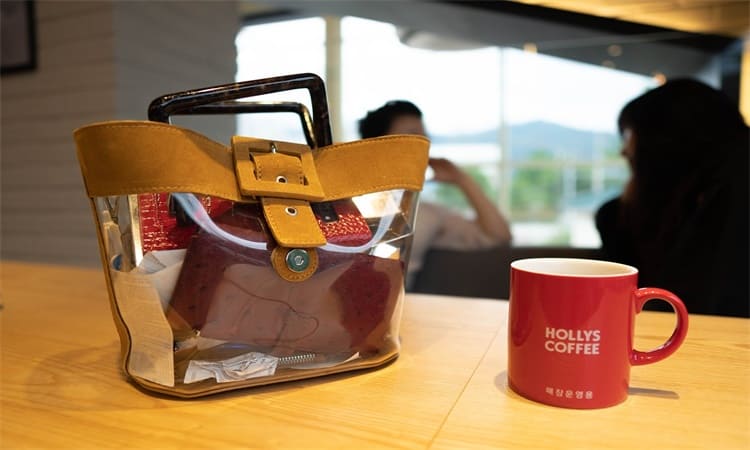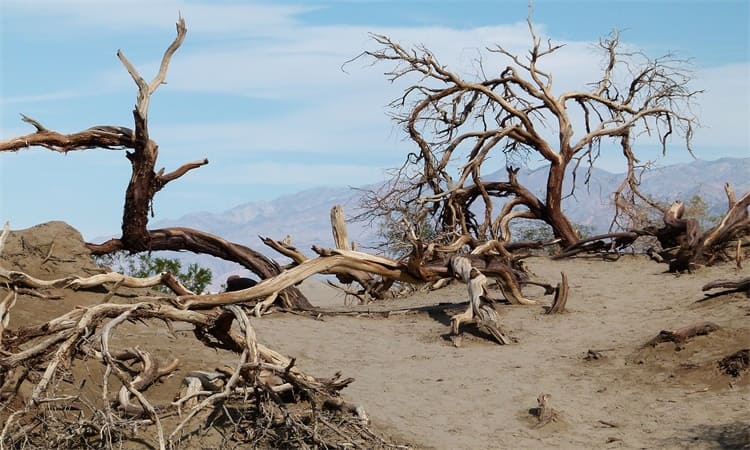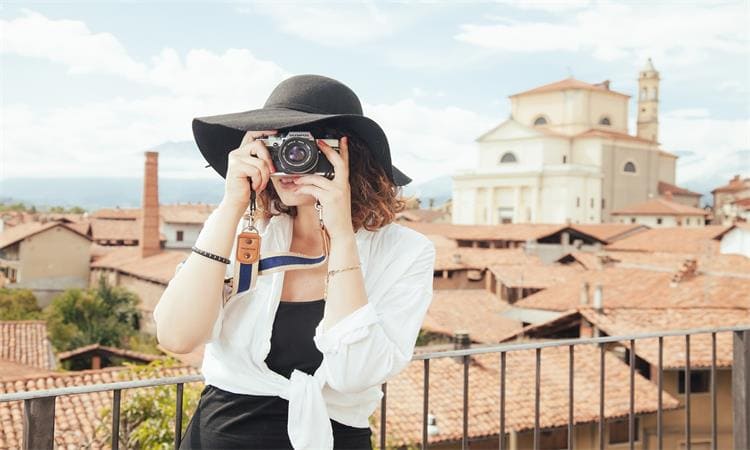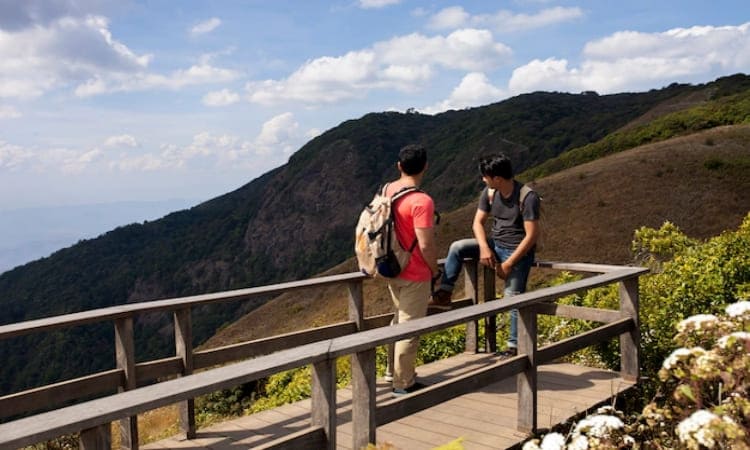Nestled amidst lush hills in the Chiang Rai province is an architectural marvel like no other — the dazzling White Temple. Officially known as Wat Rong Khun, this contemporary Buddhist temple stands out for its avant-garde design and vibrantly colorful murals covering every inch of the gleaming white facade.
Started in 1997 by renowned artist Chalermchai Kositpipat, the temple continues to expand today, showcasing his unique vision. The White Temple pushes the boundaries of religious art as a three-dimensional gallery stimulating philosophical thought. Its psychedelic pop-art installations and surreal hidden chambers have come to symbolize the innovative cultural heritage of Thailand’s northern region.
History and Architecture
The origins of the White Temple Thailand date back to 1997 when Chalermchai began construction on a small Ubosot (ordination hall) made of cement, white marble, and mirror glass. Over the years, the temple grew organically as Chalermchai continued adding new wings, murals, sculptures, and architectural details inspired by his Buddhist faith and philosophies on life. Some key phases included the renovation and expansion of the Ubosot in 2003, the addition of the “Pavilion of Truth and Dreams” in 2007, and the ongoing development of new concepts and installations.
Chalermchai’s hallmark futuristic white architectural style incorporates symbolic elements derived from Buddhist teachings. For instance, the lotus-shaped main stupa represents purity arising from the mud of human existence, while mirror glass surfaces allude to the infinite and the search for inner reflection.
Another creative aspect is the use of psychedelic pop culture murals, sculptures, and hidden chambers to provoke philosophical thought. The temple also undergoes constant restoration works overseen by Chalermchai himself to retain its pristine white colors against the natural wear of the weather.
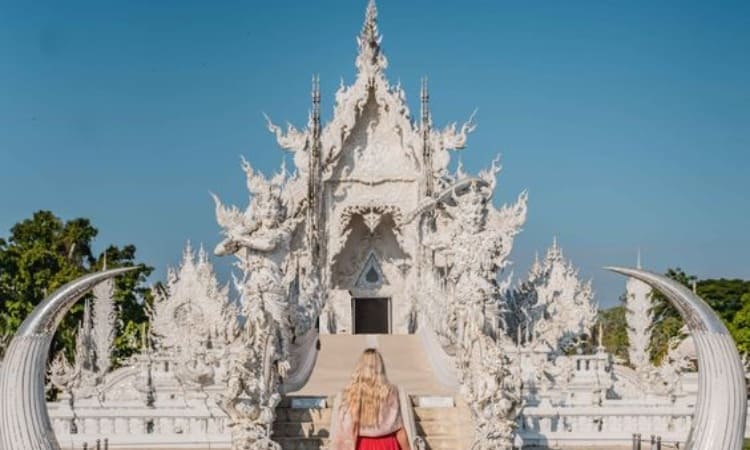
Image source: Pinterest
Getting There
The White Temple is located in Ban Hoi Lek village of the Chiang Rai province, approximately 15 km southeast of the Chiang Rai city center. This makes it easy to visit as a day trip. Public transportation options from Chiang Rai include air-conditioned buses and minivans, which depart regularly from the bus terminal on Trairat Road.
The journey takes around 30 minutes and costs around 60 Baht each way. Ride-hailing services provide another convenient option to book a car from Chiang Rai City. Self-driving offers flexibility, but international visitors may need to arrange a rental car.
Popular organized day tours from Chiang Rai visiting the White Temple include return transport and usually last 5-8 hours, allowing time to see other sights along the route, like Doi Tong waterfall. Take in mind, though, that reservations for tourists are necessary during peak season. Alternatively, you can also reach the temple as part of a multi-day itinerary combining Chiang Rai with Chiang Mai or other northern destinations.
Visitor Experience
Visitors can purchase entrance tickets (100 Baht per adult) from booths just outside the temple complex. Proper clothes covering knees and shoulders are a must to maintain modesty and respect within sacred temple grounds. Self-guided tours using maps from the front desk help navigate the vast temple. Audio guides and informational signs also enhance appreciation of artistic symbolism and religious messages.
Another point worth highlighting about the visitor experience is how bright every surface is, not to mention the inspirational murals and avant-garde sculptures. Numerous interactive spaces invite curiosity, such as surreal hidden chambers accessed through mirrors or holes in murals. Visitors are welcome to explore and reflect independently, though guided tours (at an additional fee) provide valuable insights from a knowledgeable monk or volunteer guide. Temporary art galleries on site also host periodic rotating exhibits of contemporary Chiang Rai artists. Overall, it is a very unique and memorable temple experience different from Thailand’s other renowned destinations.
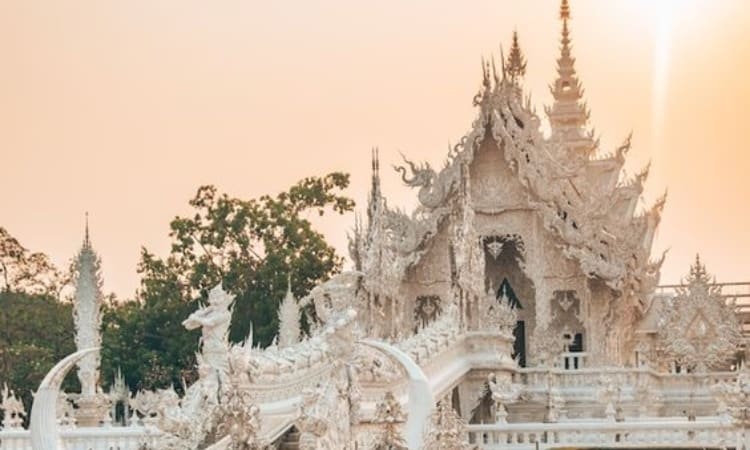
Image source: Pinterest
Must-See Highlights
There are too many memorable and thought-provoking areas at the White Temple to count. However, we feel we should include the following.
The Iconic White Ubosot (Main Prayer Hall)
The Ubosot is the architectural focal point and spiritual heart of the temple. Entering its gleaming white interior illuminated by colored stained glass is an arresting experience. A three-meter-high golden Buddha statue enshrined on the altar takes center stage, radiating tranquility. Incorporating lotus flower and diamond motifs, the intricate low-relief stucco carvings adorning pillars and ceilings are worth admiring closely for their symbolic meanings. Give at least 30 minutes to absorb the pensive ambiance within.
The Bridge of “The Cycle of Rebirth” Mural
Spanning an entire building facade, this dramatic mural presents the cycle of saṃsāra, or endless rebirth, in vivid detail across 50 panels. Depictions include birth, temptation, suffering, death, and the various realms of the afterlife existing per Buddhist cosmology. Gigantic figures arise in Chalermchai’s signature pop-artistic style incorporating contemporary elements. Don’t miss spotting cameo appearances of celebrities within the epic narrative unwinding before your eyes. Photograph the entire panoramic mural for an important teaching to cherish.
Surreal Pop Culture-Inspired Murals
Hidden chambers, stairwells, and narrow corridors lead to further surprises at every turn in the form of fantastical murals. In these, you’ll find some comments on modern society through images of fast cars, gadgets, and materialism. Others transport into surreal dreamscapes featuring morphing faces and dissolving realities. Angular characters resembling manga and graffiti art pop out of walls, incorporating landmarks from around the world. Linger in each mural, noticing subtle details and allegories revealing Chalermchai’s wry social observations.
The Golden Toilet Exhibit
A quirkily humorous highlight is the gleaming gold toilet throne mounted on a platform. Reinforcing the temple’s “nothing is sacred” boundary-pushing spirit, it pokes fun at conspicuous wealth and status symbols through excremental symbolism. The satirical message urging not to place importance on superficial values resonates just as strongly as larger religious artworks. Selfies with ironic grins are encouraged at this locally beloved photogenic spot.
Challenges and Controversies
While hugely popular for its innovative art, the White Temple has faced criticism, primarily concerning suggestive imagery within sacred temple grounds. Some traditionalists argue that certain depictions on murals disrespect Buddhist precepts of virtue. Chalermchai defends that the artwork aims to provoke philosophical thinking on greater truths of life rather than simply shock.
Rapid tourism growth has also raised issues like congestion and waste management. The temple administration strives to balance conservation efforts with enabling access through improved visitor facilities and guidelines.
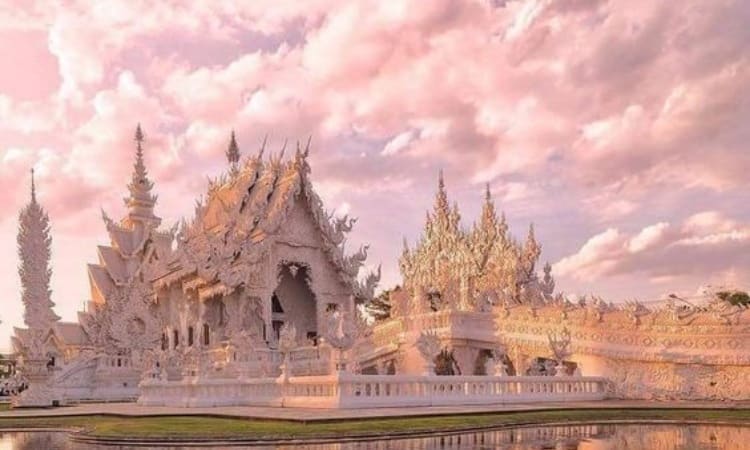
Image source: Pinterest
Tips for Visitors
Looking forward to visiting this one-of-a-kind place in Thailand? To ensure the best possible experience, here are some tips for visitors to the White Temple:
- Plan your visit for the cool, dry season (November to February) to avoid hot temperatures and large crowds.
- Allocate at least 2-3 hours to explore the grounds and intricate artwork at a relaxed pace.
- Dress respectfully with shoulders and knees covered as per the temple dress code.
- Use the audio guide available at the entrance or book a guided tour to deepen your understanding of symbols and meanings.
- Photography is okay except inside prayer halls — follow guidelines to avoid using flashes or tripods.
- Consider combining your visit with other nearby attractions like Chiang Rai City Walls to extend your educational northern Thailand experience.
- Travel light and stay hydrated and sheltered from the sun with a hat and water, as there is limited seating around the complex.
- Be respectful of worshippers and keep noise levels low inside prayer halls.
- Have Thai baht on hand for donations, as is customary at temples in Thailand.
Conclusion
Unlike conventional temples, the White Temple offers a uniquely profound and thought-provoking experience through its avant-garde sacred art. While controversies exist, Chalermchai’s innovative works undoubtedly push boundaries to provoke inner reflection on impermanence and our role in society through Buddhist philosophical lenses. Today, this facility has become a major cultural draw promoting local heritage pride and tourism to the White Temple Chiang Rai province.
For open-minded travelers keen to appreciate religious and artistic expression beyond the ordinary, visiting this vibrant complex is mandatory to contemplate life’s profundities in a serene mountain setting. The White Temple stands as an icon not just of northern Thailand but of creativity, spirituality, and social commentary through sacred art.

